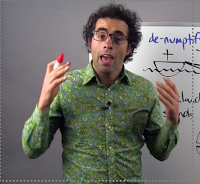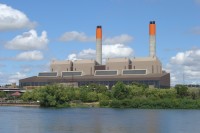This will be the best hour you’ll spend in front of a screen this week, I promise. Tony Seba explains how the plunging costs of battery storage and solar power generation, coupled with the rise of electric vehicles and autonomous driving technologies are going to first disrupt and then transform both the transport and power industries worldwide, and very, very soon. Watch this, and then ask yourself why this isn’t being reflected in the policy discussion in this NZ election. Why are we not encouraging rooftop solar? Why are we still building motorways? Drilling for oil? The timeline on this stuff falls within the lifetime of the next parliament!
Shamelessly lifted from Peter at Climate Crocks. Thanks for the lead, Peter, you just delayed my Sunday work programme by an hour!




 Simon Johnson looks at how New Zealand Aluminium Smelter Limited is behind the Meridian/Genesis deal keeping the
Simon Johnson looks at how New Zealand Aluminium Smelter Limited is behind the Meridian/Genesis deal keeping the
You must be logged in to post a comment.